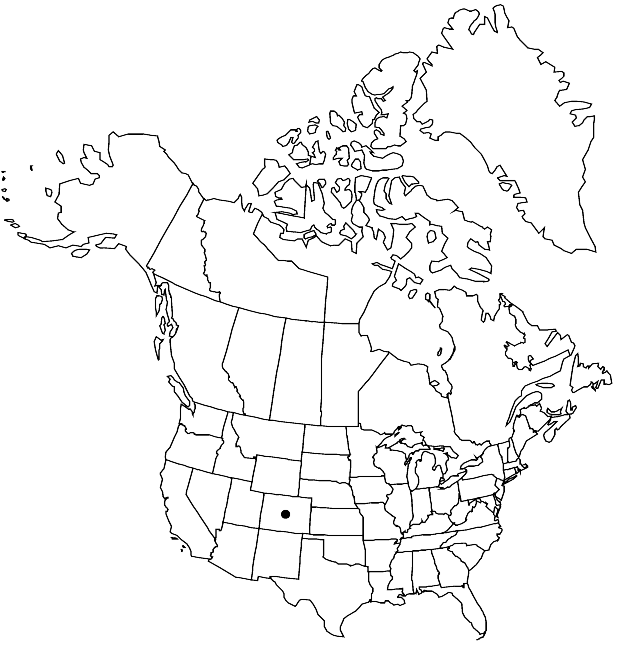Draba smithii
in H. G. A. Engler, Pflanzenr. 89[IV,105]: 177. 1927.
Perennials; (matted); caudex branched (with persistent leaf remains, branches slender, prostrate, sometimes terminating in sterile rosettes); not scapose. Stems usually unbranched, (0.5–) 1–2.4 (–3) dm, pubescent throughout, trichomes short-stalked, subdendritic, 4–12-rayed, 0.05–0.2 mm. Basal leaves rosulate; petiole (obscure), usually not ciliate, rarely pubescent proximally, (trichomes simple or spurred, to 0.25 mm); blade obovate to narrowly oblanceolate, 0.5–1.3 (–2.5) cm × (1–) 2–4 (–7) mm, margins usually entire, rarely denticulate, surfaces pubescent with short-stalked, subdendritic, 5–12-rayed trichomes, 0.05–0.3 mm. Cauline leaves (2 or) 3–8; sessile; blade oblong to lanceolate, margins usually entire, rarely denticulate, surfaces pubescent as basal, or, rarely, adaxially with long-stalked, 2–5-rayed trichomes. Racemes 12–28-flowered, ebracteate, elongated in fruit; rachis not flexuous, pubescent as stem. Fruiting pedicels divaricate, straight, (3–) 5–10 (–13) mm, pubescent as stem. Flowers: sepals ovate, 2–2.5 mm, pubescent; petals white, spatulate, 4–6 × 2–3 mm; anthers ovate, 0.5–0.6 mm. Fruits ovatelanceolate, twisted, flattened, 5–9 × 2–3 mm; valves pubescent, trichomes simple and short-stalked, 2–4-rayed, 0.05–0.2 mm; ovules 16–20 per ovary; style (0.7–) 1–2 (–2.3) mm. Seeds oblong, 0.8–1.2 × 0.5–0.7 mm. 2n = 32.
Phenology: Flowering May–Jul.
Habitat: Igneous outcrops and rocky slopes in mixed conifer, mountain shrub, and (rarely) sagebrush communities
Elevation: 2300-3700 m
Discussion
Of conservation concern.
Draba smithii is a distinctive species known only from Archuleta, Las Animas, and Mineral counties in southern Colorado.
Selected References
None.
Lower Taxa
"elongated" is not a number."thick" is not a number.
